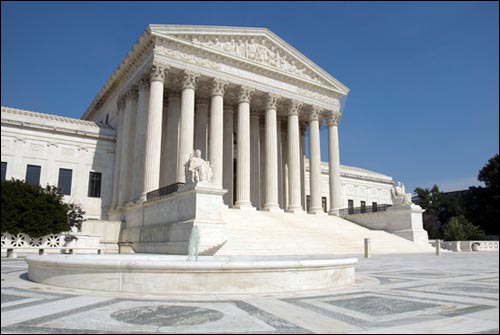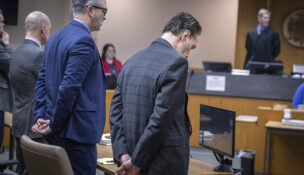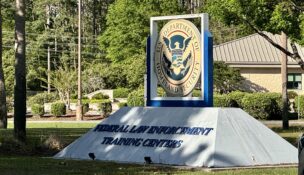Past session full of Supreme landmarks
By: KIMBERLY ATKINS, BridgeTower Media Newswires//January 11, 2011//
Past session full of Supreme landmarks
By: KIMBERLY ATKINS, BridgeTower Media Newswires//January 11, 2011//
Washington – At the U.S. Supreme court, 2010 was an historic year that brought not only some of the most significant rulings in decades in areas such as the Sixth Amendment and labor law, but also saw historic changes to the court itself.
New kid on the bench
For the first time in history, the court opened its October 2010 term with three women on the bench. The addition of Justice Elena Kagan not only created the most diverse lineup the court has ever seen, it added a new – and often vocal – voice to oral arguments.
Kagan has made her presence felt despite the fact that she has heard less than half the cases presented to the court since she was appointed. Kagan had to recuse herself from a large number of cases due to her involvement as solicitor general, the position she held before being nominated to the court by President Barack Obama.
Kagan replaced retired Justice John Paul Stevens, who stepped down from the bench at the age of 90 after nearly 35 years.
Privacy ruling limited in scope
In the highly-anticipated case City of Ontario v. Quon, the court was poised to decide what privacy interest employees enjoy in messages sent on mobile devices supplied by their employers.
But instead, the court sidestepped that issue, handing down a narrow ruling that a city’s search of a police officer’s sexually explicit text messages sent from a city-issued mobile device was not unreasonable, and therefore did not violate the Fourth Amendment.
In an opinion written by Justice Anthony Kennedy, the court expressed reservations about issuing a privacy ruling based such new technology.
“A broad holding concerning employees’ privacy expectations vis-à-vis employer-provided technological equipment might have implications for future cases that cannot be predicted,” Kennedy wrote. “It is preferable to dispose of this case on narrower grounds.”
Criminal cases tackle silence, honest services and juvenile lifers
The court issued major criminal law and sentencing cases in 2010, including a ruling that redefined just what the “right to remain silent” means for Fifth Amendment purposes.
In Berghuis v. Thompkins, the court held that an arrestee’s silence during police questioning does not constitute an implicit assertion of his rights under Miranda v. Arizona. To invoke one’s right to remain silent, a suspect must speak up, the court held.
The court also stripped prosecutors of a much-used tool in cases involving acts of financial misconduct and public corruption that don’t really fit within the parameters of other criminal statutes. In Skilling v. U.S., a case involving former Enron CEO Jeffrey Skilling, the justices scaled back the definition of the “honest services fraud” statute to include only cases involving bribery and kickbacks.
And in the companion cases of Sullivan v. Florida and Graham v. Florida, the court held that sentencing a juvenile to life without parole in non-murder cases violates the Constitution’s ban on cruel and unusual punishment.
Attorneys’ duties, fees and obligations
This year the court ruled in a number of cases involving how attorneys do their jobs – and how they get paid.
In Padilla v. Kentucky, the court held that criminal defense attorneys must warn clients if a guilty plea carries the risk of deportation. Since that ruling, state and federal courts have applied its reasoning to a host of other collateral areas outside the immigration arena, including loss of public housing, ineligibility to vote, adverse financial consequences, the loss of adoption and child custody rights, the loss of a driver’s license and even the inability to obtain a professional license in a regulated field.
On the issue of attorney fees, the court ruled in Astrue v. Ratliff that an attorney fee award under the Equal Access to Justice Act is payable to the prevailing party, not her attorney, and therefore is subject to garnishment by the government.
In the ERISA case Hardt v. Reliance Standard Life Insurance, the court held that judges have the discretion to award fees and costs to a prevailing party as long as the fee claimant has achieved “some degree of success on the merits.”
And in Milavetz, Gallop & Milavetz, P. A. v. U.S., the court ruled that bankruptcy attorneys are “debt relief agencies” under the Bankruptcy Abuse Prevention and Consumer Protection Act of 2005, and are therefore subject to its regulations.
Big labor and employment cases
In one of the most important cases of the term for labor attorneys, the court concluded that the National Labor Relations Board acted without authority when it issued opinions for more than two years with only two members.
In New Process Steel v. NLRB, the court – in the last opinion written by Stevens – held that three members are required for the Board to retain its authority under the National Labor Relations Act.
That ruling resulted in the invalidation of nearly 600 opinions issued by the two-member board.
On the employment law front, in Lewis v. Chicago, the court held that a plaintiff who did not file a timely charge challenging the adoption of an employment practice may still assert a disparate impact claim challenging the application of that practice.
Kimberly Atkins can be reached at [email protected].
Legal News
- FBI launches criminal investigation into Key Bridge collapse
- Man charged in slaying after woman’s leg found at Milwaukee-area park
- Minnesota man guilty in fatal stabbing of teen on Wisconsin river, jury finds
- Wisconsin teen sentenced in bonfire explosion that burned at least 17
- Wisconsin man who broke into home, ate victim’s chicken, slept in victim’s bed, receives prison and jail sentences
- Judge refuses to dismiss Hunter Biden’s gun case
- House passes reauthorization of key US surveillance program after days of upheaval over changes
- Milwaukee Police officer traveling to Georgia training retires before facing discipline
- Evers to ask legislature to approve largest increase in state support for UW System in two decades
- 7th Circuit Court of Appeals proposes new rules
- Federal agencies allege toxic work environment for women in new report
- Wisconsin man sentenced for sex trafficking a woman and a minor online
WLJ People
- Power 30 Personal Injury Attorneys – Russell Nicolet
- Power 30 Personal Injury Attorneys – Benjamin Nicolet
- Power 30 Personal Injury Attorneys – Dustin T. Woehl
- Power 30 Personal Injury Attorneys – Katherine Metzger
- Power 30 Personal Injury Attorneys – Joseph Ryan
- Power 30 Personal Injury Attorneys – James M. Ryan
- Power 30 Personal Injury Attorneys – Dana Wachs
- Power 30 Personal Injury Attorneys – Mark L. Thomsen
- Power 30 Personal Injury Attorneys – Matthew Lein
- Power 30 Personal Injury Attorneys – Jeffrey A. Pitman
- Power 30 Personal Injury Attorneys – William Pemberton
- Power 30 Personal Injury Attorneys – Howard S. Sicula












